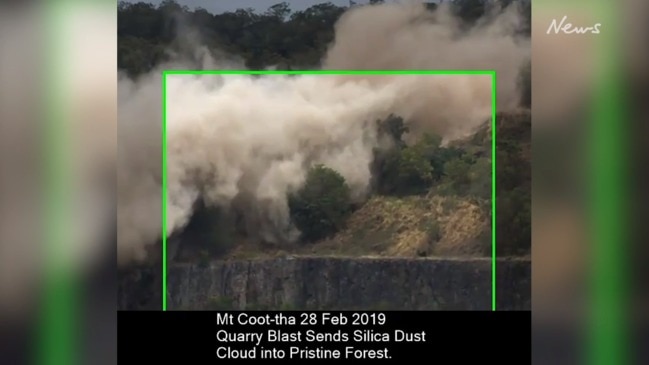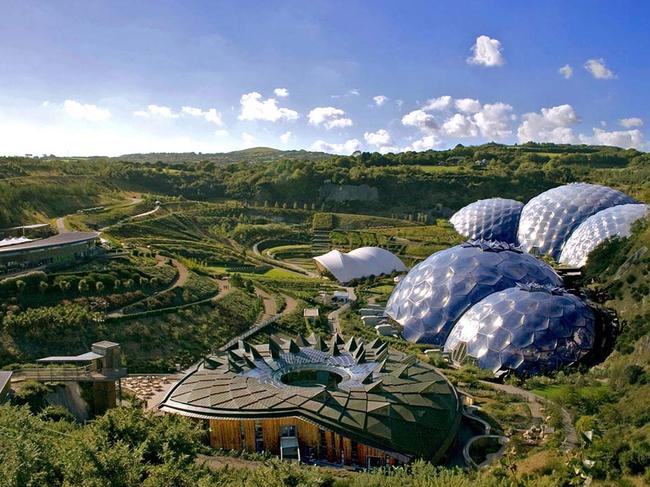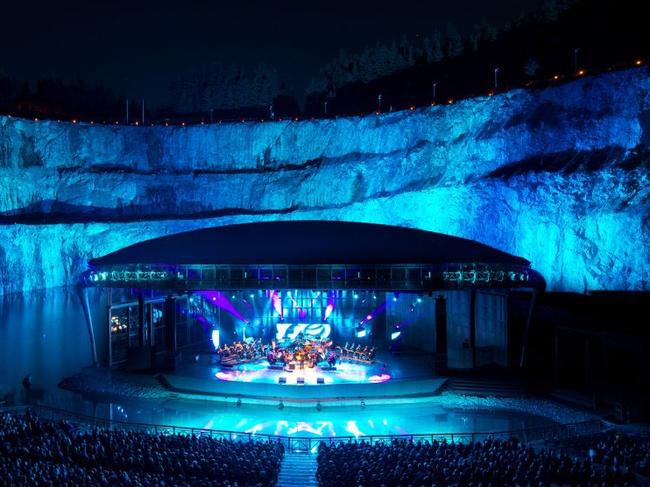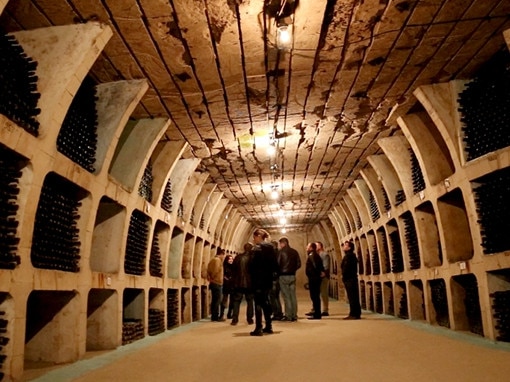Stunning future visions for Qld mine sites
Queensland mine sites could be reimagined into theme parks, luxury hotels, concert venues, wine cellars or even adventure tourism destinations, an environmental specialist says. SEE THE PICS

QLD News
Don't miss out on the headlines from QLD News. Followed categories will be added to My News.
Queensland mine sites could be reimagined into theme parks, luxury hotels, concert venues, wine cellars or even adventure tourism destinations.
That is according to one of the brains behind a 160-year-old china clay mine’s transformation into the world’s largest indoor rainforest.
Mining environmental specialist Peter Whitbread-Abrutat will over the next week travel across the state visiting old mines and offer advice to state and local governments on what sites had potential to be regenerated into new attractions that could draw a crowd.
Dr Whitbread-Abrutat was one of the experts behind turning the 160-year-old china clay mine in Cornwall, UK, into a state-of-the-art garden.
The Eden Project took 12 years to complete and is now home to the largest greenhouses in the world, featuring tropical rainforest trees up to 50m high.
“Restoring an end-of-life mine to its original state – which in Australia’s case if often cattle
grazing land – may not be the best solution,” he said.
“The number of mines due to close in coming years presents an opportunity to look at alternatives.”

Dr Whitbread-Abrutat is expected to sites including the Century Mine in Mount Isa, Mount Morgan and Mount Rawdon mines, Gympie, and the Brisbane City Council’s Quarry Repurposing Project, which takes in the Mt Coot-tha quarry.
“There will be opportunities in those places for sure, because it’s been proven in other parts of the world,” he said.
His visit coincides with the release of his second book, 102 Things to Do With a Hole in the Ground.
The book provides Queensland inspiration from some of the world’s best and most unusual ways of dealing with former mining and industrial sites, including theme parks, luxury hotels, a brewery, concert venues, golf courses, ski slopes, vineyards, and renewable energy generation.
“I thought we could create a shop window of what’s possible around the world … and find out more about how they did it and kickstart something similar,” he said.
Two Queensland examples are already revered in the book is the transformation of the Gold Coast, whose famed beaches were once mined for gold and metal making minerals in the 1800s.

The transition of the former Kidston gold mine, west of Townsville, into a Pumped Storage Hydro Project is also featured.
Dr Whitbread-Abrutat said the challenge for Queensland to invest millions in any bold transformations will be the remoteness of many mine sites.
“The reason why the Eden Project in the UK was successful as a tourist attraction is because we built a big shiny thing in an area that gets nearly five million tourists a year,” he said.
“If you’re going to build a tourist attraction, build it somewhere where associated tourism infrastructure already exists like a transport network to hotels, restaurants, other activities.
“There is some truth in build it and they will come, if they’re able to get there, stay somewhere and do other things as well.”
Dr Whitbread-Abrutat will be a keynote speaker at this week’s Queensland Mining Expo and will also hold meetings and workshops.
He is expected to discuss with state government representatives recommendations and opportunities he sees for Queensland after his mine visits.

Independent not-for-profit organisation enviroMETS (Qld) has been working to capitalise on Queensland’s post-mining land use opportunities, in facilitating Dr Whitbread-Abrutat’s visit.
Executive director Allan Morton said: “Peter is key to amplifying the need to change the narrative around post mining land use through his experiences of understanding what has worked and what hasn’t in transforming old mines into sustainable economic, social and ecological opportunities.”
Resources Centre of Excellence CEO Steven Boxall said the current and planned closure of
mines across Queensland, especially in the Bowen Basin, made Dr Whitbread-Abrutat’s
visit even more critical.
“We know innovative mine-site rehabilitation is a priority and our goal is to increase the
awareness of our resources sector and wider community to this growing issue,” Mr Boxall
said.
The Department of State Development and Infrastructure has supported enviroMETS with funding of $60,000 to assist delivery of their Prioritising High-Value Post-Mining Land Use program.






